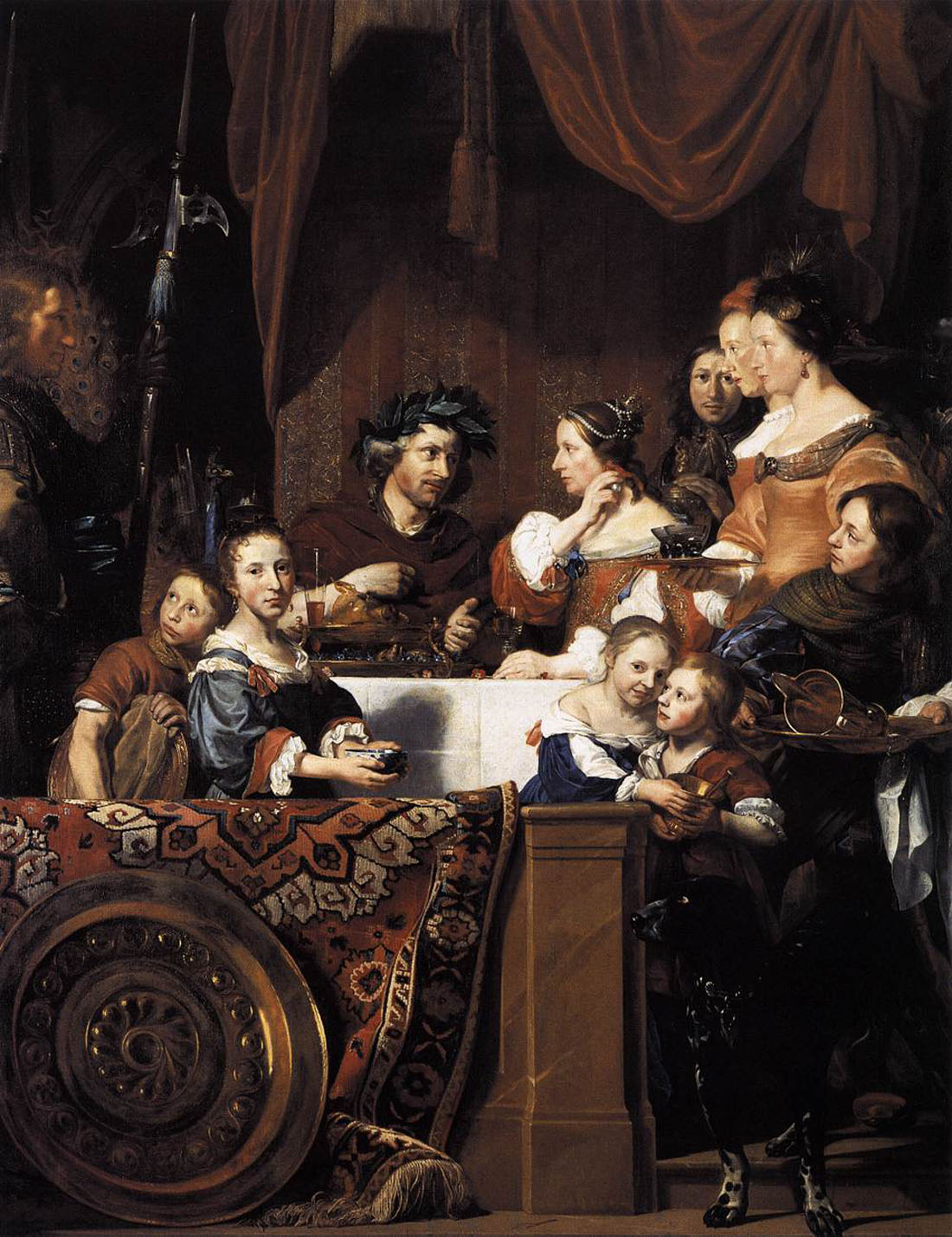
Historical
Oriental Rugs & Carpets
in Medieval European Paintings
Main Page
|
|
The de Bray Family (The Banquet of Antony and Cleopatra)
1669
by Jan de Bray (b. ca. 1627,
Haarlem, d. 1697, Haarlem)
Oil on canvas, 230 x 180 cm
Currier Gallery of Art, Manchester, New Hampshire

In seventeenth-century Dutch painting family portraits were less common than
marriage portraits, perhaps because of their greater expense, as portrait prices
were partly calculated per head. Their surviving number is considerable, though,
and their variety somewhat greater than that of marriage portraits. The function
of the family portrait is to preserve memory, as they sometimes include
portraits of family members already deceased. This purpose is evident in the
large portrait of the de Bray family.
In this family portrait all members participate in the legendary banquet of
Antony and Cleopatra. The painter is probably represented in profile at left.
His parents impersonate the Roman general and the Egyptian Queen, at a feast she
organized in a bet that she could spend the largest fortune on a meal. Although
the fare was simple, Cleopatra defeated Antony by dissolving one outsized pearl
earring in acid and swallowing the drink.
Since several contemporaries commented on the humorous but reprehensible vanity
of the story, de Bray's decision to make his family perform it may seem bizarre.
In most family portraits, poses, gestures, costumes, and attributes speak of
harmony, good education, and modesty; the wife and mother in particular would
display exemplary virtue. The decadent Cleopatra seems the antithesis of a
modest, reticent, and maternal woman. Although her banquet is indeed an
unparalleled theme in portraiture, the genre of the portrait in historical guise
to which it belongs makes explicit the theatricality of all portraiture, in
which sitters pose before painters and viewers in carefully selected guises and
settings.
The painting is a repetition of a painting by De Bray which is now in the Royal
Collection at Hampton Court.